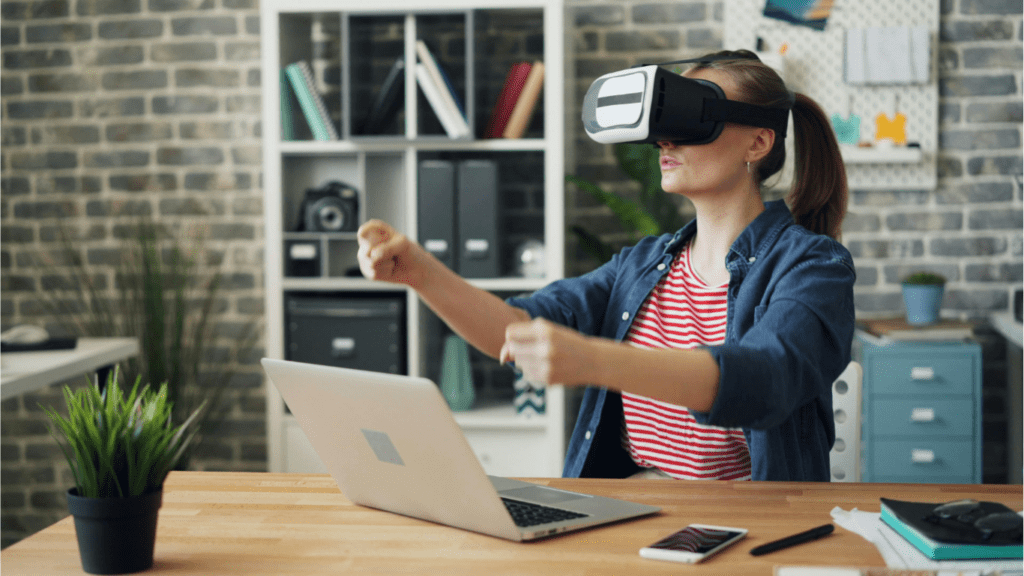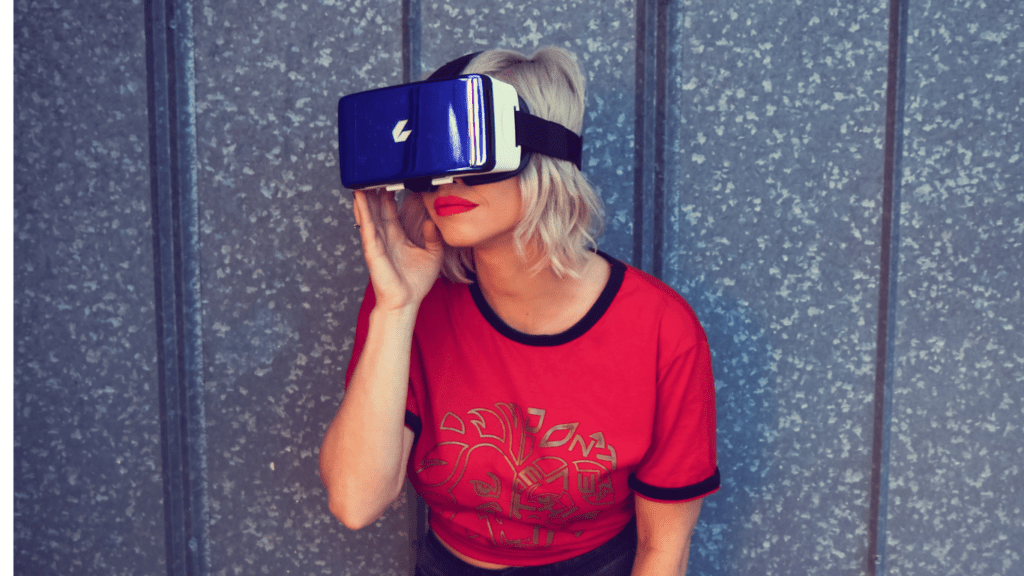Exploring the Latest Breakthroughs in Virtual Reality Art
The convergence of art and technology has taken a giant leap with the latest breakthroughs in virtual reality art. Artists now create experiences that go beyond what was previously imaginable.
Enhanced Immersive Experiences
VR’s ability to transport viewers into entirely different worlds has redefined immersion. Artists utilize VR headsets from brands like Oculus and HTC Vive, allowing viewers to step into their creations. Unlike traditional art forms, VR provides a 360-degree experience, engaging multiple senses. This results in visitors experiencing art in a more profound, personal way.
Interactive Art Installations
Interactive art installations have reached new heights with VR. Artists blend physical and virtual elements, creating installations where viewers can interact with the art. For instance, virtual sculptures can change form based on a viewer’s movements, adding a dynamic layer to static displays. These installations exist in virtual galleries, accessible to anyone with a VR headset, democratizing art access globally.
Technological Advancements Driving VR Art
Virtual reality art continues to evolve, driven by advancements in technology. These developments include both cutting-edge hardware and innovative software tools.
Cutting-Edge VR Hardware
VR art relies heavily on advanced hardware to deliver immersive experiences. Next-generation headsets offer higher resolutions, wider fields of view, and improved motion tracking.
For example, the Oculus Quest 2 features a resolution of 1832 x 1920 pixels per eye, enhancing visual clarity. Meanwhile, the HTC Vive Pro 2 provides a 120-degree field of view and precise tracking with its base stations, offering superior immersion.
Another significant hardware improvement is haptic feedback devices. Gloves like the Manus Prime X and exoskeletons such as the Teslasuit enable artists to incorporate tactile feedback into their VR creations. This technology allows users to feel textures and resistance, making virtual interactions more lifelike.
Software Innovations and Artistic Tools
Software plays a crucial role in expanding the possibilities of VR art. Advanced 3D modeling programs like:
- Blender
- Tilt Brush
offer powerful tools for artists to create intricate virtual environments. Blender’s VR support allows artists to sculpt and paint in a three-dimensional space, providing unprecedented creative freedom.
Game engines like Unity and Unreal Engine also contribute to VR art by offering robust platforms for building interactive experiences. Artists use these engines to implement complex interactions, spatial audio, and realistic physics. For example, Unreal Engine’s real-time rendering techniques enable artists to achieve photorealistic visuals, adding depth to their VR works.
Collaborative tools have also emerged, allowing multiple artists to work on a single project in real-time. Applications like MultiBrush, an extension of Tilt Brush, let artists co-create and share their VR art instantaneously, fostering creativity and innovation.
These technological advancements are reshaping VR art, making it a dynamic and rapidly evolving field.
Key Artists and Innovators in VR Art
Virtual reality (VR) art flourishes thanks to visionary artists and innovators. Their contributions drive the evolution of immersive experiences and push the boundaries of traditional art forms.
Pioneering Artists in the Field
Several artists lead the charge in VR art.
- Marina Abramović, a performance artist, explores new dimensions by integrating VR into her work. Her piece “Rising” immerses viewers in the pressing issue of climate change, offering an emotional and interactive experience.
- Laurie Anderson, an American avant-garde artist, uses VR to create deeply personal and evocative works. Her project “Chalkroom” allows users to fly through a virtual world made of words and stories, blending literary and visual art.
- Cao Fei, a Chinese multimedia artist, combines VR with sociology and urbanization themes. Her work “Eternal Wave” explores the evolution of Chinese society, utilizing VR to present a historical narrative through modern technology.
Collaborations Between Tech Companies and Artists
Tech companies partner with artists to push VR art’s limits. Google collaborates with artists through its Tilt Brush platform, enabling painters to create in 3D space. This tool revolutionizes digital painting, offering real-time feedback and an expanded creative horizon.
Oculus engages artists with its VR platforms, providing tools and funds for innovative projects. The Oculus Launch Pad program supports diverse artists, helping them develop VR experiences that reflect varied cultural perspectives.
HTC Vive collaborates with artists via the Vive Arts program. It funds and supports arts and culture projects, enabling artists to explore VR’s creative potential. This program has facilitated impactful projects, from virtual museum tours to immersive theater experiences.
Impact of VR Art on Traditional Art Forms

Virtual reality art has reshaped how people perceive traditional art forms. By immersing audiences in new experiences, VR art breaks conventional barriers and influences various aspects of the art world.
Changes in Public Art Displays
VR art brings a transformative impact on public art displays. Museums and galleries integrate virtual installations, supplementing physical exhibits and offering layered narratives.
For instance, the Louvre offers VR tours of its collections, enabling deeper engagement. These installations provide interactive aspects, allowing users to explore in ways impossible with static art. Furthermore, outdoor art exhibits benefit from augmented reality (AR) enhancements, blending digital elements with physical contexts.
Influence on Art Education and Galleries
Art education evolves with the rise of VR. Art schools adopt VR tools for immersive learning, allowing students to create in a virtual studio. They gain access to global art pieces, analyzing them in detail without geographical constraints. Galleries also embrace VR by curating digital exhibitions, enabling worldwide access to their collections.
Programs like Google Arts & Culture partner with institutions to digitize and exhibit art, democratizing access. This shift fosters inclusivity, expanding the audience and participation in art creation and appreciation.
Future Trends and Potential Developments
The evolution of virtual reality art demonstrates promising trends for its future. One significant trend is the advancement in haptic feedback technology, which offers tactile experiences in virtual environments. Artists can create multisensory installations, providing viewers with the sensation of touch, enhancing immersion.
Artificial Intelligence (AI) is another pivotal development. AI algorithms can generate art, aiding artists in developing unique pieces. By combining VR with AI, artists receive innovative tools, pushing the boundaries of creativity and technique.
The expansion of social VR platforms represents another key trend. Platforms like VRChat and AltspaceVR enable users to experience and create art collaboratively, forming worldwide artistic communities. These platforms foster real-time interaction, critiquing, and sharing within the virtual space.
High-resolution VR headsets are vital for detailed and lifelike art experiences. Future devices promise even higher resolutions and wider fields of view, delivering stunning visual clarity. This allows artists to create minute details in their works, enriching the viewer’s experience.
Finally, the integration of blockchain technology addresses ownership and authenticity issues. Through non-fungible tokens (NFTs), artists can verify and sell their virtual art securely. This offers new revenue streams and ensures the uniqueness of digital creations.
Emerging talents utilizing VR technology will likely continue reshaping the art landscape. These tools, combined with evolving platforms, offer a glimpse into an era where art and technology are intrinsically linked.

 Donemic Grantnurry, founder of the Avant Garde Artistry Hub, is a visionary at the intersection of art and technology. With a deep passion for innovation, Donemic has created a platform that not only informs artists about the latest tools and trends but also empowers them to transform their creative processes. His dedication to exploring the therapeutic potential of art has positioned Avant Garde Artistry Hub as a key resource for artists seeking to improve both their craft and well-being.
Beyond his work in art technology, Donemic is committed to helping artists build sustainable careers. Through insightful articles on marketing, business strategies, and art competitions, he provides emerging talents with the guidance they need to succeed in the competitive world of art. His work continues to inspire and support a global community of creatives who are passionate about blending art with modern technology.
Donemic Grantnurry, founder of the Avant Garde Artistry Hub, is a visionary at the intersection of art and technology. With a deep passion for innovation, Donemic has created a platform that not only informs artists about the latest tools and trends but also empowers them to transform their creative processes. His dedication to exploring the therapeutic potential of art has positioned Avant Garde Artistry Hub as a key resource for artists seeking to improve both their craft and well-being.
Beyond his work in art technology, Donemic is committed to helping artists build sustainable careers. Through insightful articles on marketing, business strategies, and art competitions, he provides emerging talents with the guidance they need to succeed in the competitive world of art. His work continues to inspire and support a global community of creatives who are passionate about blending art with modern technology.